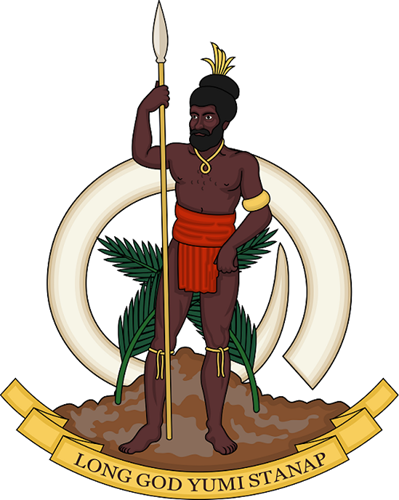Discover The Meaning behind Vanuatu’s Coat of Arms
Discover The Meaning behind Vanuatu’s Coat of Arms
The archipelago nation of Vanuatu is situated in the south-west Pacific, home to a people with a rich history and unique Melanesian culture. Over 80 remote and enchantingly rugged islands form part of this archipelago, many of which have been inhabited for thousands of years with archaeological artefacts found dating back to 2000BC.
Early Explorers and European Administration
The first European to set eyes on Vanuatu’s virginal isles was the Portuguese explorer, Pedro Fernández de Quirós, in 1606. It was, however, the infamous British explorer James Cook who drew European attention to the island nation during his second voyage, bestowing it with the name New Hebrides. During the late 18th century, Europeans began settling the islands and by the turn of the next century, the islands were under the joint administration of the British and French.
It was during the peak of WWII that two of this south-west Pacific nation’s islands, Espiritu Santo and Efate, were used by the allied forces as military bases. The following two decades saw the indigenous islanders advancing their cause for self-governance which ultimately led to full independence. On 30 July 1980, full sovereignty was granted by the British and French and the Republic of Vanuatu as officially recognised today was formed. The honourable Walter Hayde Lini, who marshalled for the island nation’s independence, became the first Prime Minister of Vanuatu.
Decoding the Symbolism behind Vanuatu’s Coat of Arms
As with any sovereign nation and independent state, the newly recognised Republic of Vanuatu created its very own coat of arms, using iconography that bears deep symbolism to the ni-Vanuatu people. Vanuatu’s coat of arms features a Melanesian warrior, more specifically a representation of the Hon. Walter Lini, the country’s first Prime Minister. Walter Lini, was instrumental in the nation gaining independence and declared 30 July, the day which full sovereignty was granted by the French and British in 1980, as Vanuatu’s official Independence Day.

The proud Melanesian warrior is superimposed on a pig’s tusk with namele leaves flanking him in the background. This imagery carries specific significance as the pig’s tusk and namele leaves represent prosperity and peace respectively. This iconography forms part of the official Vanuatu emblem which can also be found on the country’s national flag.
The bottom part of the coat of arms is occupied by a scroll that is inscribed with the words “Long God Yumi Stanap” which means “In God we stand” in Vanuatu native or official language Bislama. Now the official motto of the archipelago nation, these words were first uttered by Walter Lini on Vanuatu’s first Independence Day on 30 July 1980. A momentous day in which he encouraged his fellow countrymen to stand together as one nation.
Walter Lini: The Man Who Spearheaded Independence
Walter Hayde Lini, born in 1942 on Pentecost Island, was the founding Prime Minister of Vanuatu. He was born during the era which saw Vanuatu, then called New Hebrides, ruled by the British and French to varying degrees of success as a joint colony. In 1971 he formed the Vanua’aku Party. Spearheaded by Lini, this democratic socialist party marshalled for self-governance and later gained full independence from Britain and France.












